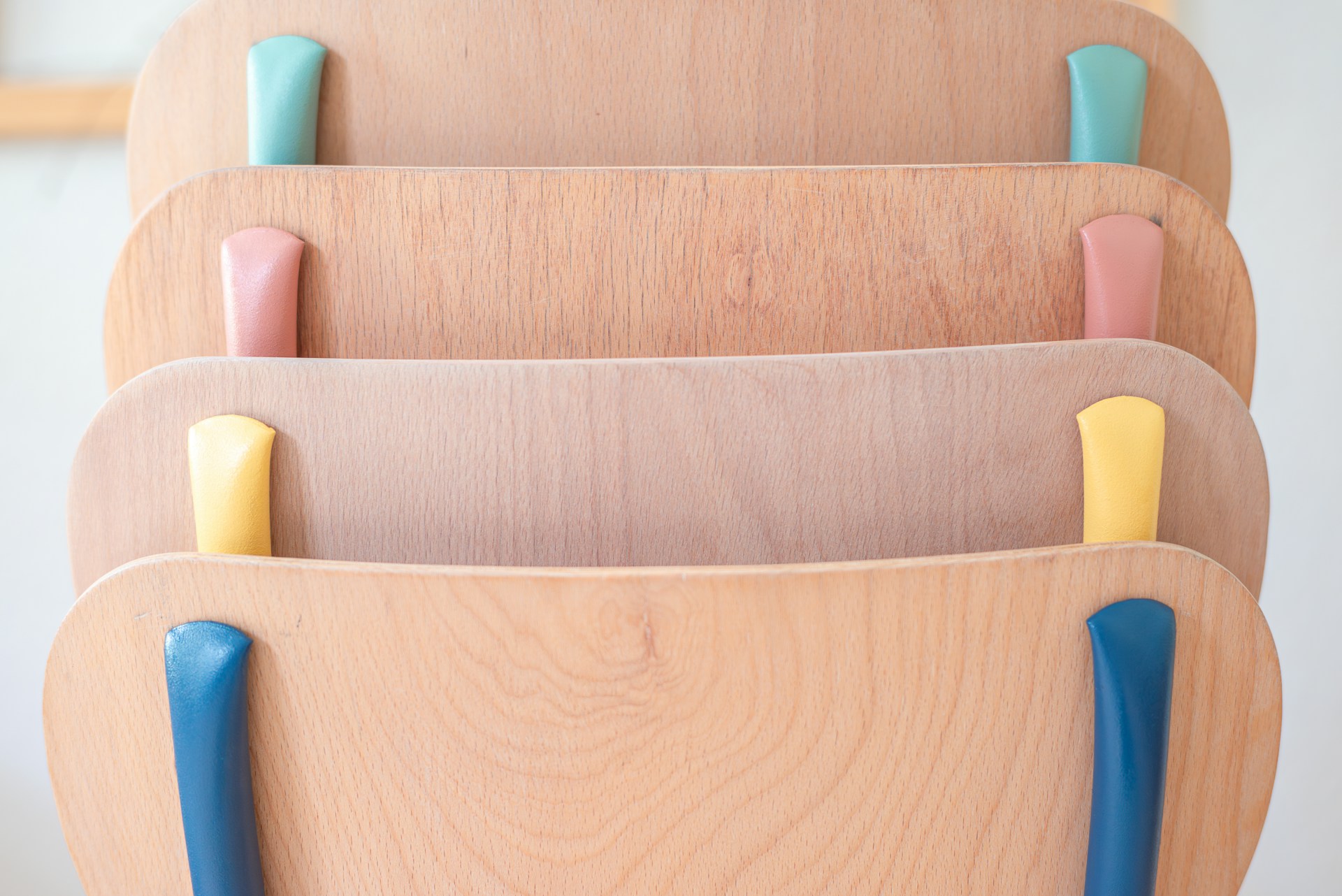
Looking to redesign your learning space to enhance both creativity and focus?
You might be surprised at how simple the solution is with colorful furniture being the answer. UK schools have recently realized how powerful the selection of appropriate furniture can be in enhancing student performance following extensive research on color psychology effects on mood and behavior.
This article examines the influence of brightly colored school furniture on student creativity and focus through recent studies and insights from industry experts. The article provides practical methods for implementing these educational strategies in your learning environments.
- How Color Psychology Affects Student Learning
- The Science Behind Furniture Design and Student Focus
- Implementing Colorful Furniture in Different Learning Environments
- Balancing Aesthetics with Functionality
- Real-World Success Stories from UK Schools
How Color Psychology Affects Student Learning
Color serves as more than an aesthetic element because it functions as a powerful influence on brain activity. Learning outcomes can be improved or impaired depending on how specific colors affect psychological and physiological responses.
Here’s what research tells us:
- Blue spaces create an environment that aids concentration and promotes productivity while maintaining calm which makes them ideal for study areas and reading spots
- The color yellow activates creative thinking and positive emotions while boosting energy levels which makes it perfect for environments like art rooms and collaborative areas.
- Green promotes relaxation and soothes eyesight which makes it perfect for spaces used for extended study sessions.
- Red boosts alertness and excitement but should be utilized as accent rather than dominant colors
Selecting pieces from the appropriate school furniture supplier guarantees the acquisition of furniture specifically designed to harness these psychological effects. An ideal furniture supplier delivers pieces that enhance learning environments through their strategic contributions.
Modern school furniture designs focus on adaptable solutions that support sustainability and promote student well-being. Industry reports demonstrate that adaptable layouts with mobile desks and stackable chairs support multiple learning styles and represent current educational furniture trends. The proper use of educational furniture helps establish an active learning space which supports both the physical wellness and mental growth of students.
The Science Behind Furniture Design and Student Focus
More than just vibrant colors matter because educational furniture design significantly affects student learning and environment interaction.
According to market research data from 2023 the UK children’s furniture market reached $2.01 billion and forecasted growth at 21.3% annual rate between 2024 and 2030 due to rising residential renovations and child-specific spaces.
Why such massive growth? Research shows that parents along with educators have come to understand the benefits that well-designed furniture brings to learning spaces.
- Improves posture and reduces fidgeting
- Supports different learning modalities
- Creates environments where students can thrive
- Reduces distractions and increases time-on-task
Products designed with ergonomic principles maintain high demand because they stop health problems and provide comfort while creating the best learning conditions. A proper chair offers more than comfort through its science-backed design which keeps student bodies in correct alignment to minimize physical distractions that steal attention from learning.
Think about it:
A student who needs to continuously adjust in an uncomfortable chair or who has difficulty seeing a whiteboard from an improperly sized desk experiences divided attention. Their cognitive resources are largely consumed by physical discomfort management which reduces their ability to learn new information.
Implementing Colorful Furniture in Different Learning Environments
Colorful furniture should be incorporated through strategic planning rather than random placement. Each learning space has unique demands which the furniture must accommodate.
Here’s how to approach various learning environments:
Primary Classrooms
For younger students, consider:
- Tables with rounded edges at lower heights ensure safety for younger students.
- Consider primary color chairs that move easily for younger student areas.
- A variety of flexible seating solutions such as floor cushions and wobble stools should be available.
- Brightly colored storage units serve as room dividers while offering storage solutions.
Secondary School Spaces
For older students, focus on:
- More sophisticated color schemes that feel age-appropriate
- Adjustable desks that accommodate growth spurts
- Collaborative furniture that can be easily reconfigured
- Design study pods or carrels with soothing colors to create spaces for independent work.
Visual interest needs to be created in a balanced way that avoids overloading students’ sensory experiences. An excess of color has the same negative impact as insufficient color because it creates disorder that raises stress levels and hinders students from focusing.
Design your classroom furniture arrangement with attention to traffic flow patterns and accessibility while ensuring clear sight lines. A gorgeous classroom layout becomes ineffective if students struggle with movement or cannot view instructional materials well.
Balancing Aesthetics with Functionality
Here’s the problem with many educational spaces:
Educational spaces often focus solely on visual appeal resulting in beautiful yet uncomfortable furniture or solely on practicality leading to functional but uninspiring designs. The best educational space combines aesthetic appeal with functional design to both support and motivate students.
Consider these factors when selecting educational furniture:
- Durability: School furniture takes a beating. Choose furniture pieces designed to endure daily wear and tear without needing regular replacements.
- Flexibility: Today’s classrooms need to transform quickly from lecture setups to group work spaces. Furniture should be easy to move and reconfigure.
- Comfort: Uncomfortable students are distracted students. Ergonomics matter tremendously.
- Storage: Clutter increases cognitive load. Integrated storage solutions keep spaces organized.
- Sustainability: Modern students care about environmental impact. Choose materials and manufacturers with solid eco-credentials.
The UK furniture market reached USD 21.9 billion in 2024 and is expected to grow to USD 31.30 billion by 2033 with a 4.03% CAGR from 2025 to 2033 because of advancements in customizable furniture and online shopping which help users find ideal learning environment solutions.
Real-World Success Stories from UK Schools
We will examine several schools that have applied these principles and achieved remarkable outcomes.
Case Study 1: Brightfield Primary School
Brightfield Primary School achieved better learning outcomes after they transformed their Year 4 classrooms with colorful and flexible furniture arrangements.
- 27% increase in time-on-task during independent work
- Significant improvement in creative writing assessments
- Reduced behavioral incidents during transition times
- Positive feedback from both students and teachers
Case Study 2: Westlake Secondary Academy
Westlake Secondary Academy upgraded their science labs with department-colored ergonomic stools and height-adjustable workstations which led to:
- Students showed improved posture and experienced fewer back pain complaints after the changes.
- Higher engagement in practical activities
- Better lab reports with more detailed observations
- Increased enrollment in optional science courses
Thoughtfully implemented colorful furniture serves as a practical educational tool that enhances learning outcomes for diverse student groups beyond mere aesthetics.
Wrapping Up the Color Story
Educational furniture with vibrant colors serves a purpose beyond classroom aesthetics by structuring learning environments through intentional design choices. The strategic combination of color psychology with ergonomic design and adaptable spaces allows students to engage deeply with learning materials and social interaction.
The UK children’s furniture market expands at 21.3% each year while the total furniture industry approaches USD 31.30 billion by 2033 which shows educational stakeholders are increasingly acknowledging the value of well-designed learning spaces.
The key takeaways are:
- Educational environments can benefit from specific colors because they influence student psychology in ways that enhance various learning tasks.
- Ergonomic furniture design plays a crucial role in boosting student comfort levels while simultaneously enhancing focus and performance outcomes.
- Furniture with adaptable features enables educational spaces to support multiple teaching approaches and student learning preferences.
- Effective strategic implementation achieves substantial progress despite financial restrictions.
- Practical outcomes reveal notable enhancements in student participation and academic achievement.
When schools transform their furniture into educational tools instead of basic functional items they establish dynamic teaching spaces which support student achievement rather than confining learning activities.
When you evaluate your educational spaces remember that strategic small changes can create powerful results. The design and color choices of classroom furniture serve as active contributors to the educational experience instead of just serving as background elements.
Hey welcome to my blog . I am a modern women who love to share any tips on lifestyle, health, travel. Hope you join me in this journey!

Speak Your Mind